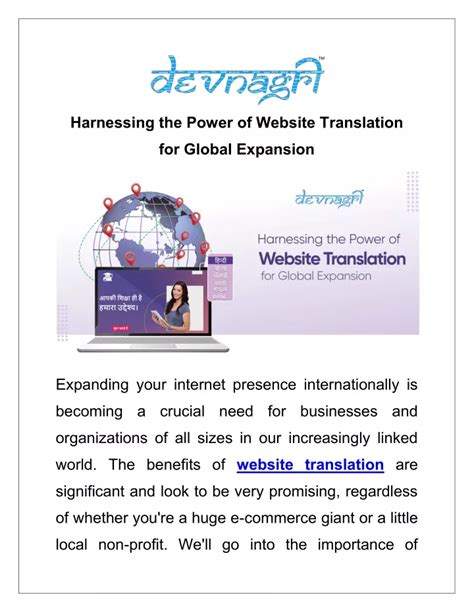The Growing Importance of Spanish in Today’s Global Marketplace
With over 500 million native speakers worldwide and an estimated 20 million learners, Spanish is the second most spoken language in the world. Its prominence extends across 20 countries, including the United States, where it is the most spoken non-English language. This vast reach presents a significant opportunity for businesses seeking to expand their global footprint.

Overcoming Language Barriers to Drive Success
Language barriers pose a formidable obstacle for businesses operating in Spanish-speaking markets. However, with the advent of cutting-edge translation technologies and professional human translators, these barriers can be effortlessly overcome. By providing access to high-quality, culturally sensitive translations, businesses can seamlessly bridge communication gaps and connect with target audiences on a deeper level.
Benefits of Translating Your Business for Spanish Speakers
1. Increased Revenue Potential
Spanish-speaking consumers account for a substantial portion of the global market. By making your products and services available in their native language, you open up new revenue streams and significantly increase your customer base.
2. Enhanced Customer Experience
Language is an integral part of culture. By translating your content into Spanish, you demonstrate respect for your Spanish-speaking customers and create a more personalized and engaging experience.
3. Improved Brand Reputation
Businesses that actively translate their materials into Spanish convey a message of inclusivity and sensitivity, which enhances their overall brand reputation.
4. Reduced Operating Costs
Investing in translation can actually reduce operating costs in the long run by eliminating language-related delays, misunderstandings, and potential legal complications.
Effective Strategies for Translating Your Business into Spanish
1. Understand Your Target Audience
Thoroughly research your target audience to gain insights into their linguistic preferences and cultural nuances. Tailoring your translations to the specific needs of your customers ensures maximum impact.
2. Choose the Right Translation Method
The choice between machine translation and human translation depends on factors such as budget, project size, and required accuracy. Machine translation is cost-effective for large-scale projects, while human translation offers unparalleled accuracy and cultural sensitivity.
3. Utilize Translation Management Systems
Translation management systems (TMS) streamline the translation process by automating tasks and ensuring consistency across translations. They also provide access to a network of professional translators.
4. Get Feedback from Native Speakers
Seek feedback from native Spanish speakers to ensure the accuracy and cultural appropriateness of your translations. This valuable input can help you fine-tune your translations for optimal results.
Tips and Tricks for Successful Spanish Translations
1. Avoid Direct Translation
Avoid directly translating words and phrases from English to Spanish. Instead, focus on conveying the intended meaning and cultural context.
2. Use Local Resources
Collaborate with local professionals, such as translators, copywriters, and marketing experts, who have a deep understanding of the Spanish language and culture.
3. Test Your Translations
Before releasing translations to the public, thoroughly test them to ensure accuracy and efficacy. User testing and focus groups can provide valuable feedback.
4. Stay Up-to-Date on Language Changes
Spanish is a constantly evolving language. Regularly update your translations to reflect the latest linguistic changes and cultural developments.
Case Studies: Real-World Examples of Successful Spanish Translations
Numerous businesses have experienced tremendous success by translating their operations into Spanish. Here are a few notable examples:
1. Netflix
By translating its user interface and content into Spanish, Netflix has captured a significant market share in Latin America. The company’s revenue in the region has soared by over 60% in recent years.
2. Amazon
Amazon’s Spanish-language website (Amazon Mexico) has become a major e-commerce destination in Mexico. The company’s sales in the country have grown exponentially since the launch of the site.
3. McDonald’s
McDonald’s has successfully adapted its menu and marketing materials to suit the tastes and preferences of Spanish-speaking customers. This has led to increased brand loyalty and market share in Spanish-speaking regions.
Conclusion
In today’s globalized economy, it is imperative for businesses to overcome language barriers to succeed in international markets. Translating your business into Spanish provides numerous benefits, including increased revenue potential, enhanced customer experience, improved brand reputation, and reduced operating costs. By adopting effective translation strategies and utilizing the tips and tricks outlined in this article, you can unlock the vast potential of the Spanish-speaking market and drive your business to new heights.
Additional Resources
- The Importance of Spanish Translation for Business
- How to Translate Your Business for Spanish Speakers
- 5 Case Studies of Companies That Successfully Translated Their Businesses into Spanish
